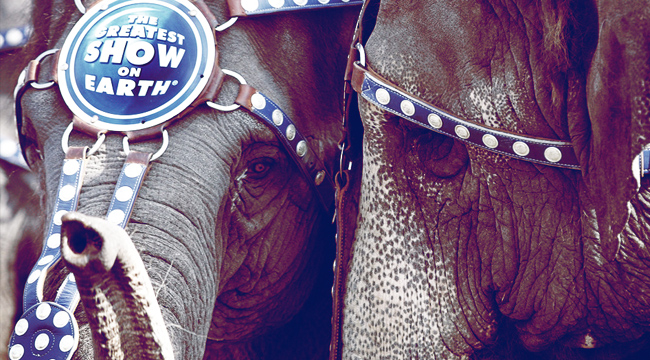
For almost 150 years, the Ringling Bros. and Barnum & Bailey Circus has toured the United States, entertaining patrons with live animal acts, human acrobatics, clowning, and illusion. It’s a longstanding tradition and a part of our cultural fabric, and it ends as of May 2017.
Over that same period of years, we can track a marked change in the way that the general public views animals — both wild and domestic — especially in regards to their use in human entertainment. While certain organizations and people hail this closure as a win for animal rights, just as they did with the original announcement that elephants would no longer be a part of Ringling’s touring team, there’s an argument to be made that the reality isn’t so clear cut or simple.
Reality rarely is. I would submit that the closure also has implications for conservation, outreach, and how we relate to the endangered animals we are rarely exposed to, and do not often see.
I. HOW WE VIEW AND WORK WITH ANIMALS: THEN AND NOW
The way we care for, work with, and utilize animals has been evolving for as long as we’ve included them in our society, but a shift has become increasingly noticeable over the past 150 years. Consider that the ASPCA was founded only 150 years ago. Consider that even fifty years ago, it wasn’t all that uncommon to let the family dog run loose without supervision, to allow him to breed indiscriminately, to train him with force — things that today, might all be likened to irresponsibility at best and animal cruelty at worst. Positive reinforcement, aka R+ training is only now gaining a real and tangible foothold amongst the general public when seeking to train their own pets (it might surprise some readers to note that “clicker” training was being developed and widely used by marine mammal trainers, yes, in dolphin programs and shows, long before it made an appearance in the home of the average dog owner).
Compare zoo exhibits 150 years ago to the design of today’s modern exhibits. Older exhibits focused on presentation of the animal for the convenience and enjoyment of the visitor — concrete, bars, and easy visibility were the rule of the day. Today, the top zoos in the nation offer naturalistic exhibits, animal enrichment, choice, and, for human visitors, the bonus of education. Rather than leaping through flaming hoops, animals in live presentations typically showcase natural behaviors while their handlers speak about conservation messaging.
These seismic shifts have proven crucial to the conservation conversation and the evolution of how we exhibit wild animals in zoos reveals our constantly developing philosophies on how we treat them.
(Want to understand zoos better? Here and here are good places to start!)
II. TRADITION, ELEPHANTS, AND CHANGE
When we consider Ringling Bros., a traveling show with a storied history, we note that a sense of tradition is very much part of its draw. Families have grown up within the circus — passing down skills, routines, and careers. Guests have long histories with the brand too. For many, “Ringling” is the circus. It’s what you picture when the word is uttered. There is an expectation of what you will see, hear, smell, taste, and experience that’s been built on tradition.
So when we look at the sort of evolution and changes that are immediately obvious in the modern zoo, or, say, in the way animals are presented in documentary filmmaking today, it becomes clear that some of these changes might not be feasible in the same way under the big top (how does one present elephants naturalistically in this situation? How do you show fans the positive changes in training and treatment?).
In fact, it’s likely that some changes to the traveling circus model would result in a backlash, as longstanding patrons get frustrated when they don’t see what they expected to see. Ringling Bros. cites its imminent closure as being due to declining ticket sales, saying that “following the transition of the elephants off the road, we saw an even more dramatic drop. This, coupled with high operating costs, made the circus an unsustainable business for the company.”
It’s a “damned-if-you-do, damned-if you don’t” scenario: A vocal portion of the public decided they no longer wanted to see elephants being exhibited in Ringling’s traditional manner, and a less vocal portion of the public decided they didn’t want to see Ringling’s show without elephants. The company took a hit on both ends of the spectrum.
III. THE SEAWORLD PARALELLS
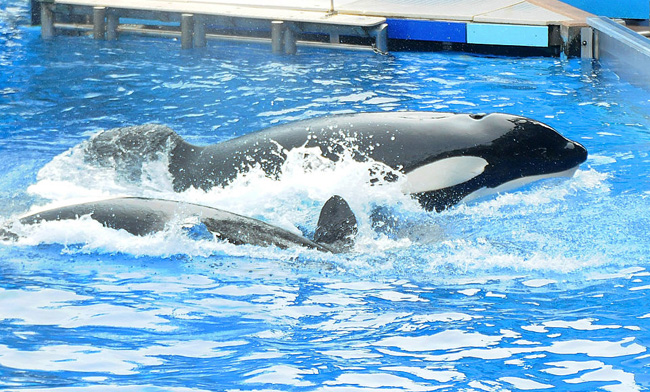
On a surface level, it looks like Ringling was protested out of business, though the reality is a little more complicated than that, and has some potential ramifications that probably aren’t being discussed enough (we’ll get there). For starters, essentially, a substantial portion of the public grew increasingly uncomfortable with seeing elephants perform under the big top in the same way that they grew increasingly uncomfortable seeing orcas perform at SeaWorld. SeaWorld’s orcas and Ringling’s elephants once played to large crowds — they were, indeed, the main draws for their respective companies.
Whether you’ve been to a SeaWorld show or not (I have), you probably recognize the name Shamu. It’s a trademarked stage name used for several orcas and multiple show titles across a period of fifty years. Similarly, If I asked you what animal you first pictured when I said ‘Ringling Bros. and Barnum & Bailey,’ I’d be willing to put money on the picture being of an elephant, even if you’ve never seen a Ringling Bros. show. Chairman and CEO Kenneth Feld has described the Asian elephant as “a symbol of the greatest show on earth.” (Elephants are, in fact, the only thing I remember clearly from my visit to the circus as a very small child; I was captivated by them in a way that obviously stuck with me).
It’s not surprising that these large, impressive, charismatic, and intelligent species are key players in the success (or failure) of the institutions they perform(ed) in. They are animals that most of us would never get a chance to see in the wild. They are also animals that — owing to intelligence and to family structures — we tend to empathize with and anthropomorphize more than we might do for, say, a reticulated python or a pink-toed tarantula. We see ourselves in them, and that affects them, for better or for worse. If we can empathize with an animal, see ourselves in it, it stands to reason that we’d not only be interested in that animal, but that we’d also start to think about how we might make its life better.
IV. RINGLING VS CRITICS
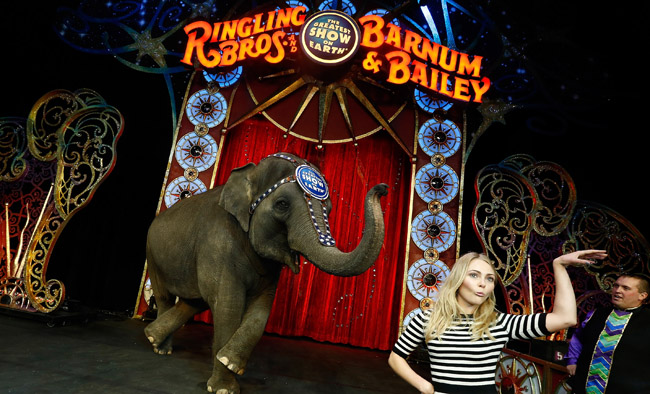
I’m not going to get into a comprehensive discussion of Ringling’s critics here, because we have a lot more to cover that I think has not been as thoroughly or widely addressed as critical response to circuses. What I will point out is that the end of the elephant participation in Ringling Bros. shows — and the subsequent end of the circus itself — was not about animal abuse, and people who try to paint it that way are doing so in the face of evidence that the animals were being appropriately cared for.
A 2015 Huffington Post article notes that “in 2014 the Humane Society and other animal rights groups paid $25.2 million in settlements to the parent company of Ringling as a result of lawsuits filed by the animal rights groups that were found frivolous and without merit.”
Digging deeper into the trial information available, it’s pretty telling that:
In the original ESA lawsuit, Feld Entertainment discovered the animal rights groups and their lawyers had paid over $190,000 to a former circus employee, Tom Rider, to be a “paid plaintiff.” The Court also found that the animal rights groups and their attorneys “sought to conceal the nature, extent and purpose of the payments” during the litigation. Their abuse of the judicial system included the issuance of a false statement under oath by Rider, assisted by his counsel, who the Court found was “the same attorney who was paying him” to participate in the litigation. The Court found in addition to Rider being a “paid plaintiff,” that the lawsuit was “frivolous and vexatious.”
In order to paint Ringling in an abusive light, they literally had to pay a guy to testify?
Under the federal Animal Welfare Act, Ringling was and is required to have a USDA exhibitor’s license, and is subject to “unannounced inspections of performing animals and their stable areas. The federal Animal Welfare Act regulates and sets guidelines for housing, transportation and care for …performing animals.”
While the inevitability of a USDA inspection does not guarantee compliance, it is a pretty good reason to actively work to comply, and it provides an objective check on the programs involved. It ensures that we don’t have organizations that are self-policing, letting things slide, and making rules that specifically cater to their own needs.
So, while you might not agree with putting elephants in shows, it’s much trickier to effectively argue that circuses are inherently abusive. Are there abusive circuses? Almost certainly. But according to the law, Ringling wasn’t one of them.
Remember when I said that we’d get back to the more complicated reality of Ringling’s demise? Well, here we are.
Ringling was less protested out of business than it was legislated out of business. As a traveling show, Ringling relies on moving from city to city, putting on performances in each one. In recent years, multiple cities have passed “bullhook bans,” prohibiting the use of a tool utilized by Ringling elephant handlers in the husbandry of their animals. Indeed, bullhooks (also called “guides” or “ankus”) have become something of a lightning rod for AR criticism; it’s been posited that the tool is outdated and inhumane. That said, there are also plenty of people in the animal training field that argue that a bullhook is a management tool, and that as such, it can be used appropriately and correctly; that it’s a guide and not a prod.
Stephen Payne, Vice President, Corporate Communications of Feld Entertainment, in an op ed to the US News describes the bullhook as:
…humane and appropriate for working with large elephants. This is not just the position of Ringling Bros. but also the American Veterinary Medical Association, the American Humane Association and the Elephant Managers Association, groups whose members actually work with elephants. Bullhooks are not, as the article claims, designed to harm elephants. Quite the opposite, they are merely an extension of elephant handlers arm and at Ringling Bros. are only used by highly experienced professionals.
In this light, the bullhook looks like it might be described much the same way we describe the tools to work with our own animals. Leashes, collars, reins, crates? All tools that can be used or misused, depending on the handler.
At any rate, the ankus gained enough negative attention that cities began banning the device — Minneapolis, Austin, Oakland, Richland, Los Angeles. In some cases, entire states banned its use. With every city that banned its use, contingency plans had to be made: skip this city on the touring list? Leave the elephants behind, to pick them up up in another location? The logistics became impossibly complicated, necessitating that the elephants be dropped from the traveling shows altogether.
But the issue didn’t end there. Once elephants were off the docket, petitions began targeting the movement of other exotic animals. Currently, legislation regarding animal transport is either passed or pending in Maine, San Francisco, NYC, and Los Angeles. Consider also the Traveling Exotic Animal and Public Safety Protection Act, which intends to amend the Animal Welfare Act, “restrict[ing] the use of exotic and wild animals in traveling circuses and traveling exhibitions.”
This was effectively the death knell for Ringling. People go to the circus to see animals. No ability to travel with them? No circus. Sorry, clowns are great, but they can’t carry a two hour show.
But there are other uncomfortable implications here. What exactly are “traveling exhibitions?” How should that part of the bill to be applied or translated? Could it be applied to outreach and education programs? Were you ever visited by the “reptile man” when you were in grade school? Or by a zoo’s animal ambassador program? Many zoos feature assembly and classroom programs that bring animals to schools for educational opportunities0 — count San Diego Zoo, the National Zoo, the Audobon Nature Institute, and Houston Zoo among them. These are programs that I find inherently valuable. Ringling’s closure, and the reasons for it, make me concerned for them.
Legislation for the protection of animals is important. Ivory bans? The (now threatened) Endangered Species Act? Protected habitats? I’m all for them. But I do think that it’s possible for legislation to overreach. I think it’s possible that legislation will attempt to draw rigid lines in a sand that’s constantly shifting, that isn’t easily and simply demarcated. This is a complex issue for which there is no simple and perfect answer.
V. THE MISSING PART OF THE STORY: RINGLING’S HISTORY OF CONSERVATION
In 1995, “in the interest of the species’ present and future well-being,” the Ringling Bros. and Barnum & Bailey Center for Elephant Conservation was established. The 200-acre, state of the art facility in Florida is dedicated to the breeding, conservation, and study of the Asian elephant. Like its African counterpart, the Asian elephant is deeply endangered, but it typically gets less media attention. (Independent of this story, if I’d simply asked you to picture an elephant, would you have pictured an African one? My guess is yes).
This work is, in my opinion, pretty important. “Built on more than 145 years of experience and expertise of working with elephants,” the CEC became a “global focal point for the study of Asian elephants, [hosting] researchers, academicians and conservationists to create new dialogue focused around animal care, conservation and health, and the exchange of knowledge about the Asian elephant both in the Western Hemisphere and in the elephants’ range countries.”
The reasons this conservation program matters are twofold:
1. It centers and brings into focus the hundreds of years of collective experience that Ringling has working with, understanding, and caring for elephants. I don’t think this knowledge can be underestimated or discounted. Gaze into the pool of knowledge we have about elephants in human care today — the way they learn, what their bodies are capable of, how they can be safely and effectively transported, how they respond to treatment, how they interact with people — and recognize that the pool has been and continues to be fed by and nourished by Ringling springs.
As we continue to explore the ways in which we can help save both African and Asian elephants, it stands to reason that we may very well benefit from the knowledge of people that have actively cared for and trained them. Conservation work is not only done in situ. We know, in fact, that habitat for these animals is disappearing at an alarming rate, and that the habitat that does exist isn’t a guaranteed safe-zone. We’ve seen the work being done with other iconic, endangered species; the efforts being made to save them via captive breeding programs, AI, and surrogacy. We are staring down the extinction of elephants within our lifetime. The future for these animals is uncertain, and may well require the hands-on approach of people that are familiar with the breeding, healthcare, and husbandry of the species.
2. It shines a light on the plight of the Asian elephant in particular. African elephants tend to get the vast majority of media attention. Less than 35,000 Asian elephants exist in the wild, and there’s somewhere around 280 in the US; put bluntly, the Asian elephant population equals less than a tenth of the African elephant population. With a history of working specifically with Asian elephants, Ringling chose to focus its conservation efforts on them.
Utilizing the profits made from their entertainment endeavors, Ringling has:
a. Developed a successful breeding program. Ringling maintains the largest herd of Asian elephants in the western hemisphere. They currently focus on the development of a Genomic Resource Bank (GRB) for Asian elephants in the hopes of preserving and protecting genetic diversity.
b. Partnered with the Sri Lankan Department of Wildlife Conservation to mitigate and prevent human-elephant conflict. This partnership enabled Sri Lanka “to undertake its first scientific census of its elephant population, giving researchers and local governments better information to help reduce the locations where people and elephants might compete for land and food.”
c. Partnered with two major Sri Lankan universities, Rajarata and Peradeniya, sharing extensive veterinary and husbandry experience. These partnerships established the Ringling Bros. Center for the Study of Asian Elephants, and lent support to the Elephant Transit Home and “its mission to improve the lives of sick and orphaned elephants and facilitate their faster return to the wild.” They also provided opportunities for graduate students to learn and “apply Ringling Bros. elephant husbandry to their country’s elephant herds to more humanely care and study elephants in their native habitat.” According to the CEC, “one of these students, with our support, has even begun doctoral work on new Asian elephant conservation research.”
d. They’re researching and treating elephant endotheliotropic herpes virus (EEHV), considered “the single greatest health threat to the Asian elephant.”
And bonus round:
Ringling’s herd is part of a cancer research program that may provide insights into treatment and prevention for humans. According to the CEC’s website, researchers are “studying why there is such a low incidence of cancer in elephants, what makes this cancer resistance possible in elephants and not in humans, and how this may correlate to new treatments for pediatric cancers.”
These are all initiatives that probably go completely unnoticed by patrons and critics of Ringling alike, but they feel pretty important to note. According to the CEC, “all of these conservation programs are made possible by the families and fans that come each year to a Ringling Bros. and Barnum & Bailey performance, with a portion of each ticket helping to fund these important programs.”
Come May, what happens to those programs? Do critical organizations and protestors have a plan to support or shore up the work being done? Or was it simply enough for them to see the end of Ringling’s shows? If so, why? Why is that enough?
VI. THE LULL AND PULL OF THE ARMCHAIR CONSERVATIONIST
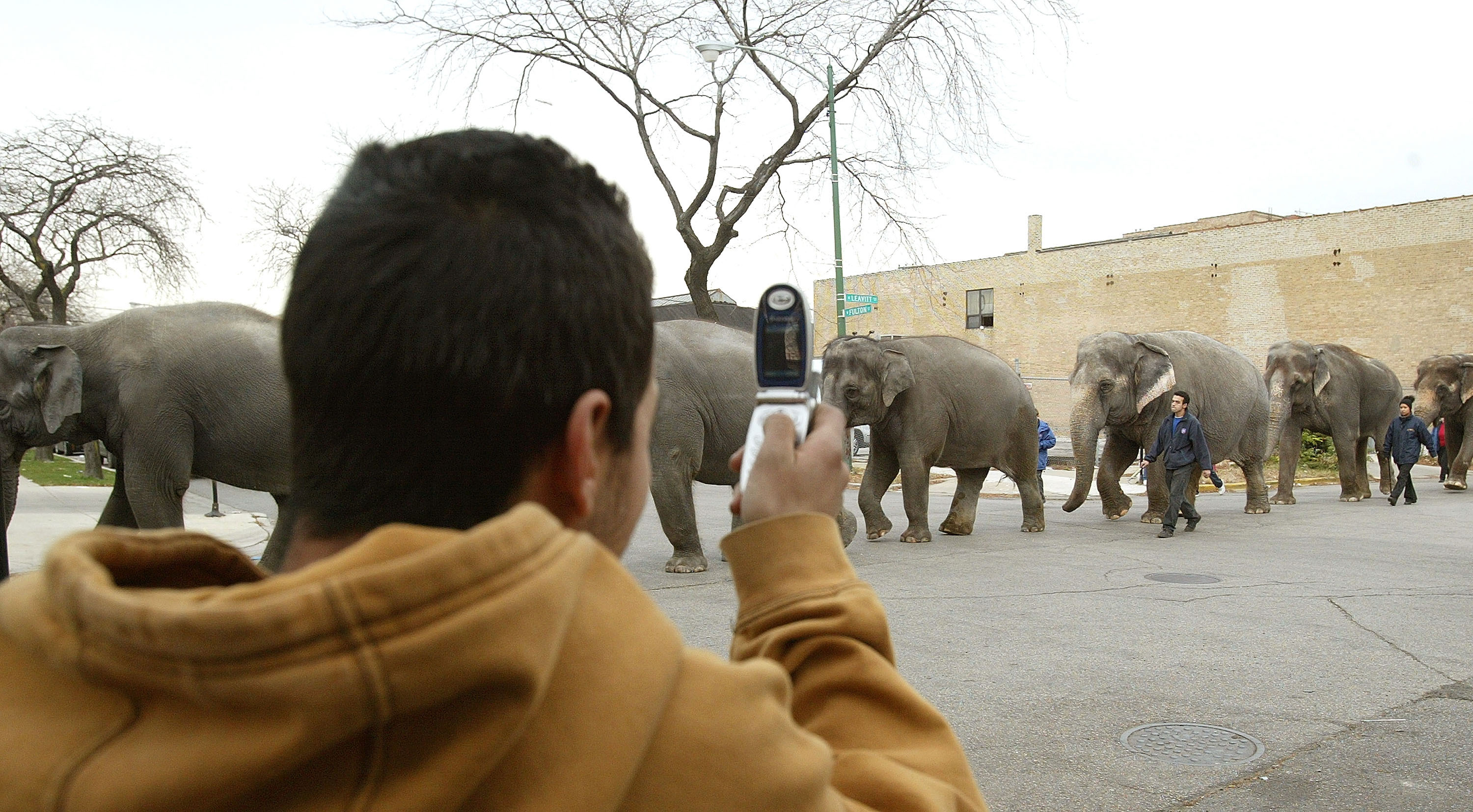
I submit that it feels like “enough” to a certain population because there’s a sense of satisfaction and completion in being a “giant killer.” Look what we did! We brought down SeaWorld’s orca program! Look what we did! We put a stop to Ringling’s elephant shows! Look what we did! We ended it! It’s over!
As a result, we don’t have to think about it anymore. We don’t have to think about elephants at all for awhile. When we aim our sites on SeaWorld or Ringling, we get to focus on what other people are doing to animals. We don’t have to take any responsibility for what is happening to those animals. Instead, we get to feel like we’re “fighting the power,” and we probably get to do it by posting a few things on Facebook or Instagram, signing an online petition, or promising to never spend our money on SeaWorld or Ringling, which is not an especially hard promise to make when we never really liked going anyway because to conservation-minded folks it does, obviously, feel icky.
In short, we get to tell other people how they can be better at caring for animals, but concrete actions on our part are not required. And there’s an end game! We know when we’ve won because the shows stop, the breedings stop, etc.
But when it comes to global conservation issues — deeply scary ones, like whether or not a species will go extinct — have a lot to do with people’s personal choices, especially their consumer habits. Palm oil consumption is probably the most clear illustration of this point. The equivalent of three-hundred football fields of rainforest is destroyed every hour to make room for palm oil plantations; that’s habitat rendered useless to elephants, orangutans, and clouded leopards. Palm oil is the most widely consumed vegetable oil on the planet — a versatile substance that shows up in an astonishing number of products: readymade pizza dough, ice cream, packaged cookies and chips, instant noodles, chocolates, soaps detergents, hair care products, cosmetics, biodiesel.
It’s so ubiquitous it’s nearly impossible to avoid, and it goes by many names, so unless you’re planning on memorizing this list:
Vegetable Oil, Vegetable Fat, Palm Kernel, Palm Kernel Oil, Palm Fruit Oil, Palmate, Palmitate, Palmolein, Glyceryl, Stearate, Stearic Acid, Elaeis Guineensis, Palmitic Acid, Palm Stearine, Palmitoyl Oxostearamide, Palmitoyl Tetrapeptide-3, Sodium Laureth Sulfate, Sodium Lauryl Sulfate, Sodium Kernelate, Sodium Palm Kernelate, Sodium Lauryl Lactylate/Sulphate, Hyrated Palm Glycerides, Etyl Palmitate, Octyl Palmitate, Palmityl Alcohol
…you’re gonna have a hard time.
Ban it? The plants we might use to take its place produce less product and take up even more resources. No, instead, you have to focus on being a conscientious consumer, which means actively looking for companies that use Certified Sustainable Palm Oil and label their products with the RSPO palm or the Green Palm. It means calling companies that don’t have the label, and holding them accountable. It means choosing not to purchase your favorite products until they do.
I’m not going to pretend that this sort of conscious consumption is super easy to do. It’s certainly not as easy as signing a petition. It means you don’t get to check out of certain areas of your life that normally don’t require too much thought. You have to work at it. It’s time consuming. What’s more, it’s really uncomfortable to face the fact that our consumer habits directly have a direct impact on the existence of endangered species. The survival of these species is on us.
It’s probably a lot easier to focus on a situation right in front of us. One closer to home, that doesn’t require us to evolve, just someone else. This is especially true when you consider that, unlike the SeaWorld and Ringling situations, when it comes to changing consumer habits we’re probably not going to get the satisfaction of seeing an immediate result. We don’t get to say “we did it!” We don’t get to say, “it’s over!” When is it over? When do we get to stop and think about something else?
It’s not that easy. It’s not that simple. We might be working hard to change how we react to, engage with, and consider the world’s wildlife for as long as we live. We might die knowing that the fight isn’t over.
VII. IT’S NEVER THAT SIMPLE
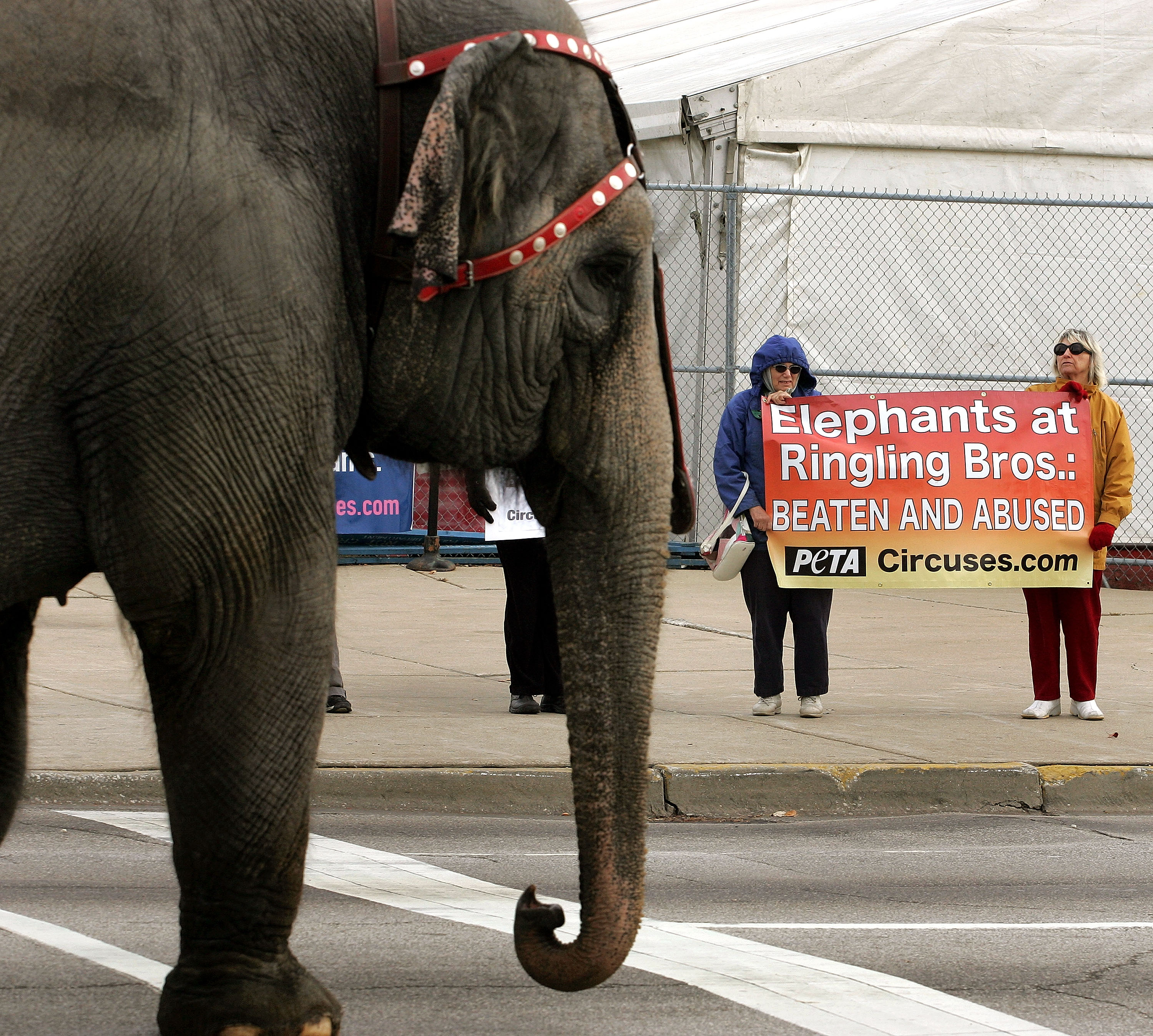
There’s no simple solution here. There’s no black-and-white delineation, no good-vs-evil. Anyone who believes that entertainment, education, and conservation are mutually exclusive is being willfully obtuse. While all three aren’t a guarantee, they are an aspiration, and they will continue play an important role in how we relate to wild animals, especially as wild spaces continue to shrink. If we aren’t already existing at a time in which no animal lives without some sort of human-interference (whether direct or indirect), we are swiftly approaching it.
Whether you are thrilled to see Ringling fold up its tents or you’re devastated, it’s probably because you profess to love animals. If that’s so, you owe it to the animals you love to be present for them. You owe them your agency.
That means owning up to the truth that while our views on animals in performance capacities are changing and evolving — with more and more people struggling to enjoy performances that they view as unnatural and outdated — we’re desperately in need of evolving the way that we view, respond to, and aid the animals that we don’t see performing. It means pulling our heads out of the sand, and recognizing that we don’t get back-pats and accolades for snarking at a company until it folded, when, in fact, they are almost certainly doing more for conservation than we personally have. For some, that’s a bitter pill to swallow, but it’s an important one.
This one’s going to be a cliffhanger. We’re going to be uncomfortable. We’re going to be conflicted, because in a complicated world, it’s almost impossible not to be. It’s probably safe to say that in an ideal world, wild animals would be free in the wild. Sadly, that ideal world doesn’t exist. What we have instead, is a world requiring compromise. We’re probably all going to have moments where we really struggle with how we feel, what we can accept, what we think is possible, and what will actually work. But I don’t think we get to opt out. I don’t think we get to absolve ourselves responsibility because we don’t personally work with wild animals. I don’t think anyone can be allowed the luxury of believing that the closing of Ringling is a solution — let alone a simple or easy one.
It doesn’t just get to be how we relate to animals in entertainment that changes. It has to be us changing too.






